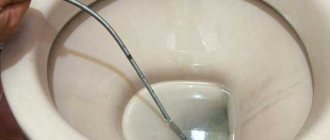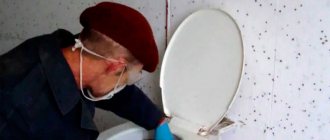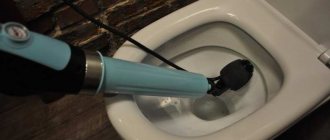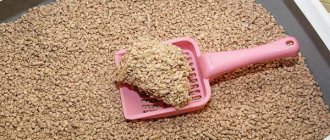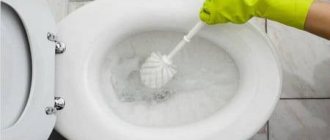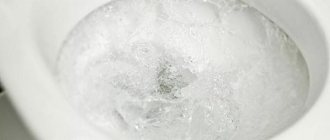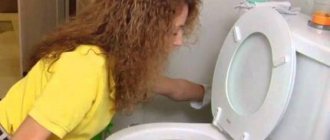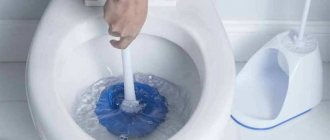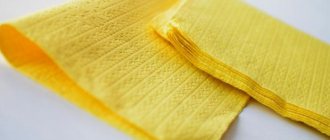In this article:
- 3 types of toilet clogs
- Advantages and disadvantages of cleaning a toilet with a cable
- Cable options for cleaning the toilet
- Instructions on how to clean a toilet with a cable
- Preventing toilet blockages
Folk remedies and household chemicals do not always help with blockages. In such cases, people begin to look for other ways, for example, cleaning the toilet with a cable. At first glance it may seem that this is an extremely simple procedure, but this impression is deceptive. There are three types of cables, plus they differ in diameter and type of attachments. Which one to choose?
In addition to purchasing the right tools, it is necessary to use a special cleaning technique so that the process itself does not take too much effort and time. In our article we will tell you which cable to choose, how to use it and what to do to prevent toilet blockages.
Why do blockages occur?
Salt deposits, hard water and sediment deposited on the walls of pipes are the main causes of traffic jams. But there are times when the sewer becomes clogged due to the fault of the user. Remains of preserved food that fall into the toilet, accidentally thrown out garbage, or a floor rag washed out of a bucket can lead to a clog. The waste clogs the sewer pipe and prevents water from draining. Mechanical debris is removed with a spring cable.
The toilet flush can also be blocked by debris that has collected in the shower stall, bathtub, or sink. When washing dishes, kitchen waste can settle in the sewer pipe and accumulate until a blockage forms. Hair from the bathtub and shower also clogs the drain. Operational blockages are eliminated using a rope cable.
There are situations when violations were committed during the installation of the sewer system. Under constant pressure, the weak point is destroyed. In such cases, it will not be possible to eliminate the problem using a cable, since repair or replacement of pipes will be required. Technological blockages are the most complex type of damage.
How is the sewage system arranged in apartments?
Sewage in modern apartments performs the task of removing human waste. For this purpose, a waste disposal line is installed from each point where waste is generated (toilet, sink and bathtub) to a common sewer riser.
Apartments located on adjacent floors are connected to it. The riser is a large pipe with a diameter of 0.1 m, located in the bathroom.
All sewer systems that are built in apartment buildings and private buildings must strictly comply with construction and sanitary standards.
Previously, only cast iron pipes were used for sewerage installations, but now mostly plastic ones are installed. In a plastic pipeline, the possibility of blockages is less likely, since defects do not appear on the walls, and “overgrowing” of the riser section occurs very rarely.
To make it easier to clean the riser in a high-rise, holes are made on each floor - sewer inspections.
The most often clogged cast iron pipes of the sewer system, which are found in older buildings. Overgrown pipes have increased resistance to runoff and are susceptible to external factors
The standard configuration of a plumbing fixture (toilet, washbasin or bathtub) looks quite simple:
- device drain hole;
- siphon (a curved elbow that is connected to the waste disposal line);
- supply pipeline to the riser;
- large pipe or riser.
The blockage can be observed in any area, but it should be borne in mind that the cause of its appearance is man-made. If the plumbing fixture is used for its intended purpose, there should be no problems.
Pros and cons of cleaning a toilet with a plumbing cable
When using a plumbing cable when a toilet is clogged, advantages and disadvantages are revealed, like with any tool.
Experts include the following advantages:
- compactness;
- the ability to launch it into a pipe over long distances;
- ease of use;
- affordable price.
The cable will be found in the house of a practical owner. The tool copes with traffic jams of any complexity. Its use is possible even without the help of a specialist.
Drastic measures
If the clog cannot be removed using available methods, all that remains is to disassemble the toilet.
In such a situation, it is strongly recommended to call a plumber, since it is quite difficult to carefully remove the toilet and maintain its functionality:
- In Soviet times, the toilet was fixed with cement, so dismantling requires a specialized tool.
- Pipe. going to the toilet can also be embedded in the wall.
- If you disassemble it yourself, you can additionally clog the sewer pipe with construction waste.
If you still decide to remove the toilet with your own hands, then it is important to adhere to the following algorithm:
Blocking the water supply to the tank. Dismantling the barrel and unscrewing the nuts securing the base of the product. Next, you need to slightly move the toilet, opening the drain. Using a plumbing cable
the elbow and part of the sewer pipe should be carefully cleaned
Cleaning the toilet is a rather unpleasant task, on which you can spend a lot of effort, nerves, time and money.
Advice from professional plumbers will help prevent blockages:
- Do not dispose of food waste down the toilet, no matter how small it may be.
- You should not flush toilet paper, much less other hygiene products. There were cases when even a baby's diaper was pulled out of the riser.
- Clean the toilet with baking soda or a commercial product every month for preventive purposes.
- If a blockage appears, first try to remember what could have caused it:
- Traditional recipes with soda or citric acid can cope with food waste.
- Multilayer paper or the contents of a vacuum cleaner container will be dissolved by special chemicals.
- Dense solid waste, such as clay, sand, can only be overcome by a cable.
For such situations. At home, it is better to have a mandatory set of baking soda, a plunger, a cable, and several pairs of long rubber gloves.
Types of cables for cleaning the toilet
Automatic and mechanical devices are equipped with attachments to remove dirt. You can break through a clog in the toilet with a cable without the help of a specialist. The tool pushes and pulls out debris using hooks.
There are several types of toilet cleaning tools:
- cable;
- flexible;
- spring;
- tension;
- electric.
A variety of models of cables and attachments for them greatly facilitates the work of removing the valve in the toilet. Attention!
In order not to compact the plug deeply and cause even more damage, experts recommend immersing the cable very carefully, changing the nozzles if necessary. The diameter of the rope rod is 6 mm. The tool is made of galvanized steel. It is usually used in an apartment. The cable length is up to 5 m. It is characterized by high strength and flexibility. The device is capable of clearing operational blockages in the toilet. A split metal tube is wound around the core, allowing it to pick up cork particles and pull them out.
A flexible hose copes more conveniently and effectively with mechanical plugs. The diameter of the cable is 25 mm, the permissible length is up to 50 m, a spiral is attached to the steel core, which allows you to pull out debris. Metal tape is a type of flexible rod. The kit includes tips and a handle.
Spring cable length up to 6 m, wire diameter 9 mm. The tool is based on a hollow steel spring structure. It is convenient to immerse it in the sewer system. Refers to simple household appliances.
A flexible tension cable has a shaft wrapped in spring wire. As the handle turns, the rod becomes tense and rigid. The tool belongs to professional devices. Deals with complex mechanical toilet blockages. Stored in a special drum.
The electric cable is a compact installation. Allows you to clean large diameter pipes. The device is equipped with a pistol-type tip and handle. The wire is wound on a drum.
When to turn to professionals
If none of the methods presented above provide the desired result, it is advisable to contact professional companies that specialize in solving such problems. Using modern equipment, experienced plumbers will be able to effectively deal with blockages of any complexity in a short period of time.
Turning to professionals will help you get rid of complex blockages in your sewer system.
How to choose a cable for cleaning a toilet
To properly clean a complex clog in the toilet with a cable without the help of a specialist, study the video instructions. When choosing a tool, probe and inspect for mechanical damage. Experts do not recommend using a cable made of wire with bending memory. Inspect the reliability of the handle fixation. The pipe chosen is plastic and springy. Nozzles and other elements must be made of high quality steel.
When choosing a plumbing rod, consider:
- wire diameter 6-18 mm - based on the size of the sewer pipe and the complexity of the blockage (d 10 cm - 10-12 mm rod, d 20 cm - 14 mm rod, d more than 20 cm wire with a cross-section of 16 mm);
- handle design - should have a comfortable L- or Z-shaped bend with a locking system that allows you to hold the rods;
- a set of replaceable attachments: harpoons, reinforced punches, brushes.
Power-modified tools allow you to clear jams quickly. Spinner attachments and harpoons effectively cope with both household and mechanical plugs.
Chemicals
There are toilet cleaners available in different price ranges. The most expensive composition is not always the most effective.
Let's consider what products are presented on the Russian market.
- “Mole” is one of the products in the budget segment. Despite the low price, it removes clogs in the toilet well. It contains caustic soda, but its effect is enhanced by surfactants and other additives. Available in powder and gel form. Dissolves grease and biosolids, including hair and fish scales, caught in the drain system. Does not destroy plastic, cast iron and steel pipes.
- Vortex Draft is a more expensive option and comes in liquid form. The main active ingredients are caustic soda, active chlorine (labarrack water), surfactants. It has the same effect on blockages as “Mole”. Safe for all types of pipes.
- Tiret has a similar effect and composition to Vortex Draft.
To clean plastic sewer pipes, give preference to liquid or gel. Undissolved powder particles can get stuck in joints and corrode rubber seals, and the liquid leaves when washed with water without staying in one place.
How to use a cable to unclog a toilet
If the toilet is clogged, you can clean it yourself with a cable, having first carefully studied the layout of the sewer system. In plumbing, a siphon water seal is attached to the drain hole. This is a curved tube that blocks the penetration of unpleasant odors into the room. The siphon is connected to a drain pipe that flows into the sewer system. To avoid damage to the structure and to clean complex systems with bends, care and patience are required.
Sequence of work:
- The plumbing cable is unwound and brought to the toilet. Gradually introduce it into the hole. They check whether the plug is in the way; if it blocks the rod, unscrew it. Carefully pull the tool inside the sewer pipe until you feel an obstacle. To check whether the cable has hit a plug or bend, pull it out a little and plunge it back into the drain. If it doesn’t go away, it means the jam has been reached.
- To avoid pushing the cork even deeper, carefully perform back-and-forth movements. The tip of the cable will begin to break up the jam. At this moment, rotational movements of the rod are performed. Hold the wire with one hand and twist the handle with the other. Working with an assistant will make it easier to get around pipe bends and joints. One worker turns the cable handle, and the second holds the rod in the correct position. If possible, pour hot water into the toilet while working. It softens debris and facilitates the advancement of the rod. The device must always be in a tensioned position. If the cable is weakened, it will begin to twist and its further use will be impossible.
- As soon as the plug is advanced towards the wide sewer pipe, the cable will begin to pass freely and move quickly. The instrument is removed from the toilet. The drain is washed with plenty of hot water.
Nozzles allow you to simplify, speed up work and clean the toilet; they capture a larger volume and break up the blockage
. Attention! To prevent the plumbing cable from breaking, before starting work, check in which direction the first and last layers of the core are wound. If it’s to the right, then you should turn the tool to the right.
If the water still doesn’t flow well when flushing the toilet, repeat the procedure. A brush is placed on the rod, which allows you to clean the pipes from adhering alkaline sediments.
After use, plumbing tools are thoroughly washed under running water. If the dirt cannot be removed, use chemicals. Then leave it to dry or wipe it dry with a rag. Check to see if there are any contaminants left. Store in a dry place. Some devices come with a bag. If there is one, the rod will first be placed in it. With such storage, the plumbing cable will last for a long time.
There is no need to finish this work of art.
Cleaning the toilet begins, for now, with the most harmless material - soda
First you need to determine the cause of the blockage and its location.
Causes
Among the reasons, we identify three, the nature of which, however, is the same - our disregard for the house, ours or someone else’s, is no longer so important here:
- Firstly, we ourselves threw in potato peelings, watermelon or melon peels, dropped rags or a whole roll of toilet paper.
- Secondly, we hired builders who don’t care what opinion they leave their customers with. Completing the work, they decided to solve the problem of cleaning up all construction waste radically - through the toilet;
- Thirdly, you are unlucky with neighbors who do not hesitate to throw everything they find down the toilet, instead of taking the garbage outside to the trash can.
Place
Only in the latter case, the place of contamination will be practically inaccessible to you - it is already in the common house sewer, and the problem of how to clean the toilet will disappear for you by itself, you will have to contact the housing office.
In all other cases, there are five possible places where garbage can accumulate:
- in the primary canal to the siphon;
- in the siphon (place “A” in the diagram);
You can also clean the toilet with a commonly used “punch” called a “plunger.”
- in the channel before exiting into the sewer pipe;
- at the junction of the toilet with the sewer (B in the diagram);
- at the junction of the house pipe with the house manifold.
Folk remedies
If there are no household chemicals in the house, folk remedies will come to the rescue.
| Means | Mode of application |
| Vinegar and soda | To clean the toilet with soda and vinegar, you need to pour half a pack of soda down the toilet drain and add a glass of vinegar. The mixture will quickly remove fat plugs and deposits; after 15 minutes you need to pour 0.5 liters of boiling water. Do not pour boiling water if the connecting corrugation is made of plastic. |
| Vinegar | For cleaning you will need a vinegar solution (9%). It needs to be heated a little and poured into the dried toilet bowl for several hours, then clean the inner surface with a brush or the rough side of a sponge. If the vinegar solution does not do its job, you can try 70% vinegar essence. It also needs to be filled in for a couple of hours, and then the toilet should be washed with detergent. |
| Soda | Pour a packet of baking soda into the dried toilet bowl and leave it overnight or for at least 8 hours. Baking soda not only removes plaque, but also whitens perfectly. |
| Lemon acid | Citric acid will help get rid of urinary stones and plaque. Three tablespoons of acid should be poured into the toilet and left for at least three hours, then clean it with a brush. The advantage of citric acid is that it not only cleans, but also refreshes the toilet for a long time, unlike many chemicals that have a strong, unpleasant odor. |
| Borax | Borax effectively fights deposits and rust. A glass of borax should be poured into the toilet and left overnight; clean it well with a brush in the morning. |
| Hydrochloric acid | Hydrochloric acid is not suitable for plastic sewer pipes. In other cases, you need to pour a little liquid into the toilet and leave it for an hour, then you can wash it off. |
| White | Dry the toilet, fill it with one bottle of white and leave overnight. Clean thoroughly with a brush in the morning. |
| Vitamin C tablets | To clean the drain hole, throw into the toilet and dissolve a couple of vitamin C tablets, rinse after 10-12 hours. |
| Coca Cola | If you clean your plumbing frequently, Coca-Cola will help. A two-liter bottle of lemonade should be poured into the toilet and left overnight; in the morning all that remains is to clean it with a brush. In addition to Coca-Cola, you can use Sprite or Fanta. |
| Electrolyte | An electrolyte is an acidic substance that is used in batteries. It must be applied to the inner surface of the closet and left for 20 minutes, then rinsed thoroughly. |
| Oxalic acid | Oxalic acid, which cleans products before applying enamel, can effectively remove urinary stones. Apply a small amount of product to the surface of the toilet from the inside and pour it into the water. After half an hour, rinse and clean the toilet. |
| Mustard powder | Mix powder, corn starch and citric acid in equal proportions. Rub the inside surface of the toilet with this paste and leave for 30 minutes, then brush and rinse. |
| Caustic soda | Caustic soda corrodes organic matter. You can clean the inside of the closet with it, but you must do it with gloves. |
| Iodine monochloride | Iodine monochloride, which is sold in veterinary pharmacies, can be used to remove rust, plaque and deposits. The liquid should be poured into the toilet and left for an hour, then rinsed with a brush. This caustic substance should not be used on plastic sewer pipes. |
| Hydrogen peroxide and ammonia | The substances must be mixed in a ratio of 1:10 and applied to the inner surface of the closet, left for several hours, and then rinsed off. |
Remedies
There are different methods for dealing with blockages, each of which has its own characteristics. Conventionally, they are divided into two types.
- Chemical. These include various products with a chemical composition in the form of powders or liquids. Instructions for their use are usually indicated on the packaging. Such substances are mainly used in domestic conditions, where simple blockages occur.
- Mechanical. They are presented in the form of plungers and cables. A plunger in the form of a dense rubber membrane with a handle removes small blockages by creating a pressure difference in the system. For more serious traffic jams, special cables are provided that can be used not only in internal systems, but also in external sewers.
When the sewer is completely ready for cleaning, the working end of the cable is lowered into the pipe, and the following actions are performed:
- rotate the cable in one direction, promoting its gradual unwinding;
- when the cable reaches a blockage, move back and forth, periodically removing the product and inspecting it for debris;
- after removing the plug, thoroughly clean the pipe from deposited particles in order to achieve maximum results;
- To completely eliminate small elements, it is worth flushing the system with hot water.
If water flows well through the sewer pipes, then the clogging problem has been completely eliminated. At the end of this process, the cable must be rinsed well, dried and wrapped in paper for further storage. It is not recommended to store the device in polyethylene, as this may adversely affect the appearance of the device. Proper care will extend the life of the product, as well as preserve its original qualities.
We use what we have at home
You can clear a clogged toilet yourself using the products that are available in every household - vinegar, vinegar essence, baking soda or caustic soda. It should be said right away that vinegar and soda can only remove minor contamination or help soften the waste plug for its subsequent mechanical cleaning with a plunger or plumbing cable.
- pour 150 grams of baking soda into the toilet (about 5 tablespoons);
- pour in 1 liter of 9% vinegar or 130 ml of essence;
- wait for the reaction to pass;
- pour in a large amount of boiling water.
If after this the water leaves in full, then nothing else needs to be done. If the water stagnates and does not drain well, you need to use a plunger or a special cable to break through the blockage.
If you clean the toilet with vinegar and soda from time to time as a preventive measure, then dirt will not accumulate in the drain system and you will not have to use strong chemicals or call a technician.
Caustic (caustic soda, caustic soda) is a strong alkali. It more effectively fights sediment in the sewer system.
How to clear a clogged toilet using caustic soda?
- Prepare the solution in a large non-aluminum container: cold water - 5 liters, caustic soda - 2 kg.
- Pour it into the toilet.
- Wait from 5 minutes to several hours. The time depends on the severity of the blockage and the location of the blockage. It will dissolve faster in the siphon, but it needs to be given more time to clog in the pipes.
- Fill in a large volume (up to 10 l) of hot water.
Before making a solution with caustic soda, you need to take precautions - wear work clothes that cover the surface of the body as much as possible, and rubber gloves
What is the tool
A cable is a special device for cleaning sewers. It is also called a flexible shaft. It consists of a long spring, a handle and a spiral. The handle is designed for a comfortable grip
When working, the tool is rotated, so it is important that the handle does not slip in the palm. Additional devices can be attached to the spiral, for example, a hook for removing debris stuck in the sewer
A plumbing cable is a must have in any home to clean the drain yourself. Thanks to a simple device, you can solve many problems without turning to specialists for help. The tool easily rolls up into a compact spiral, so you only need a small box or bag to store it.
Scheme: how to clean a toilet
What types of devices exist
- Cable. This is a compact flexible shaft made of durable galvanized steel with a diameter of no more than 6 mm and a length of 2.5-5 m. It is very convenient to use and easily fits into all bends of the sewer. The end of the device is smooth, but experienced craftsmen often unravel it to create something like a brush. This simple device easily picks up hair and clumps of debris.
- Spring-twisted. The tool is suitable for household use and is a long hollow spiral with a diameter of 9 mm. The spring-twisted cable for drain cleaning is equipped with an easy-to-grip handle.
- Spring with tension shaft. The tension rope for drain cleaning is chosen by professionals. The device has a large diameter (13.5, 16 mm). The length is designed so that it is possible to eliminate complex blockages in the section of pipe between floors, and can reach 60 m. For ease of use, a handle is provided, designed like a curved shaft.
Rope flexible shaft
What problems are solved using cables?
There are several types of blockages, each of which disrupts the normal flow of water. A flexible drain cleaning cable can eliminate almost all of them. This does not always solve the problem for a long time, but as a temporary measure the tool is irreplaceable.
Main types of blockages:
- Operational. They arise due to fatty deposits on the walls of pipes, debris, and hair. Household plumbing cables for drain cleaning are designed to remove just such blockages. Chemical agents also work well with them.
- Mechanical. This type of blockage occurs when foreign objects get into the drain of the sewer system. They get stuck in pipe bends and block the drainage. If the object is small and can be picked up, the problem is easy to solve.
- Technological. Such blockages have nothing to do with the operating characteristics. The reason for their occurrence is improper installation of the sewerage system. Using a flexible shaft can improve outflow for a short time, but the problem must be solved radically.
Sewer pipe cleaning
